Earth Week: Special Edition of Good Climate News this Week!
Apr 26, 2024
Just over two months ago, on President Trump’s 100th day in office, the Peoples Climate March brought together hundreds of thousands of people from across the country—students, workers, faith communities, Indigenous Nations, community organizations and environmental groups—to demonstrate our wide-spread and community-rooted resistance to the administration’s agenda, which benefits polluters rather than the people of this country. The message was clear: We Resist. We Build. We Rise. And as LCV added: We Vote.
This march harnessed the energy of the resistance and pointed it towards climate action. And now, two months later, as new polling shows that voters continue to react unfavorably to Trump’s environmental policies like withdrawing from the Paris Agreement and cutting funding for the EPA, LCV is building on the march’s momentum for climate action and a healthy environment.
Among many initiatives, LCV has helped run a training for women environmental candidates, released a report that reveals that congressional caucuses of color, by-and-large, recognize the importance of environmental protections for their constituents, held a training for youth organizers, launched the “Our Lands, Our Vote” campaign, and LCV’s Chispa organized the “Clean Buses for Healthy Niños” campaign in Maryland, Nevada, Arizona and Connecticut.
While LCV staff and members are working hard to keep action on climate and the environment moving forward, four of our staff members took a moment to reflect back on their experience at the Peoples Climate March. For each, the collective resistance of the march persists in their work as they fight to defend our federal progress, advance state progress, and build this movement.
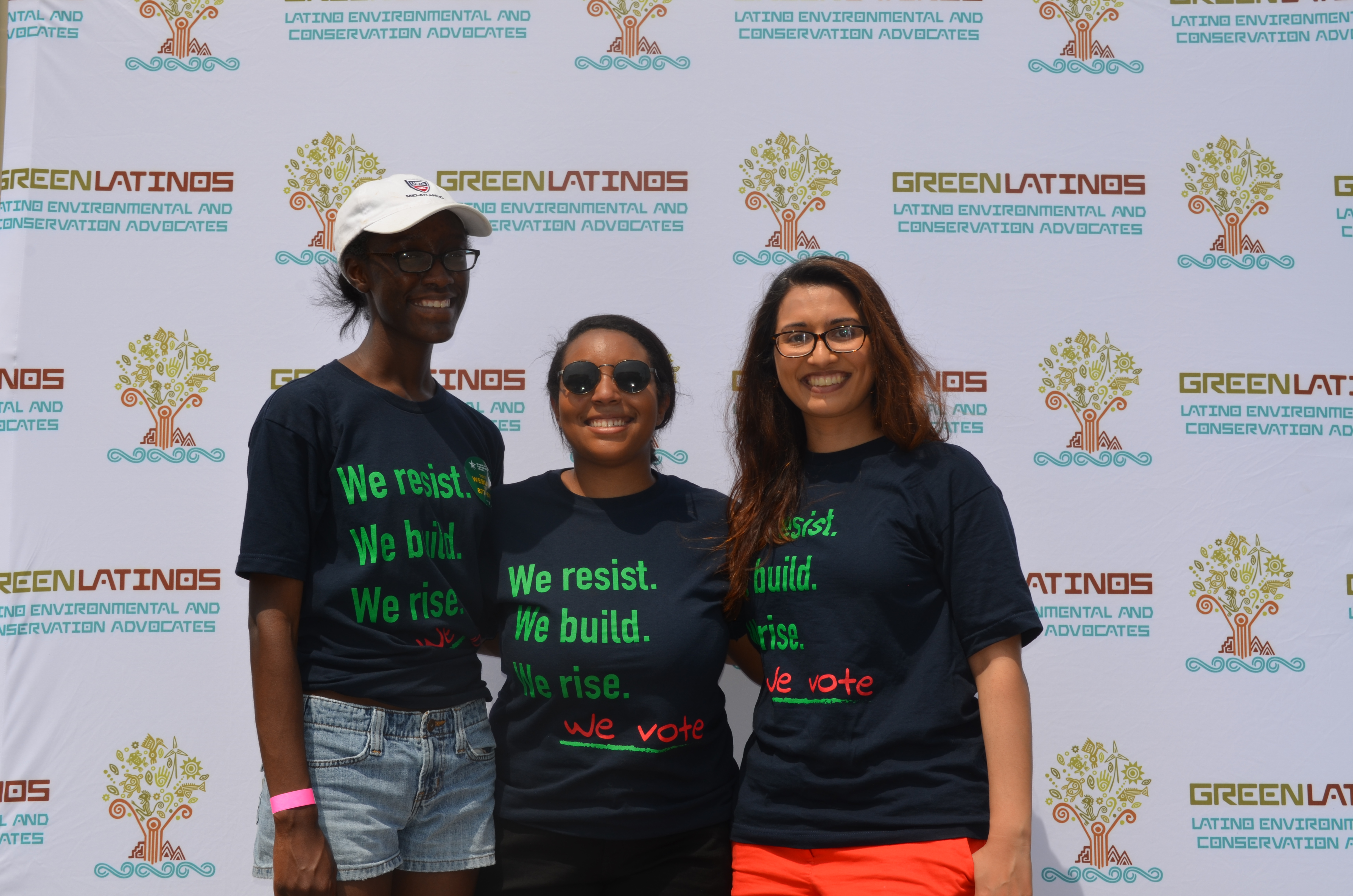
Neal Stevens-Jackson, Development Associate, LCV:
For me, the Peoples Climate March was a great introduction into the new era of the environmental movement. It was my first protest during the Trump administration, and it was overwhelming in the most positive ways. The physical scope of the march, the powerful speeches at the rally, the hilarious signs—all of these factors helped create one of the most affirmative marches of this unusual time.
Each community involved in the march represented more than just their individual environmental interests—they represented a shift towards a collective resistance that agrees we are all in this fight together.
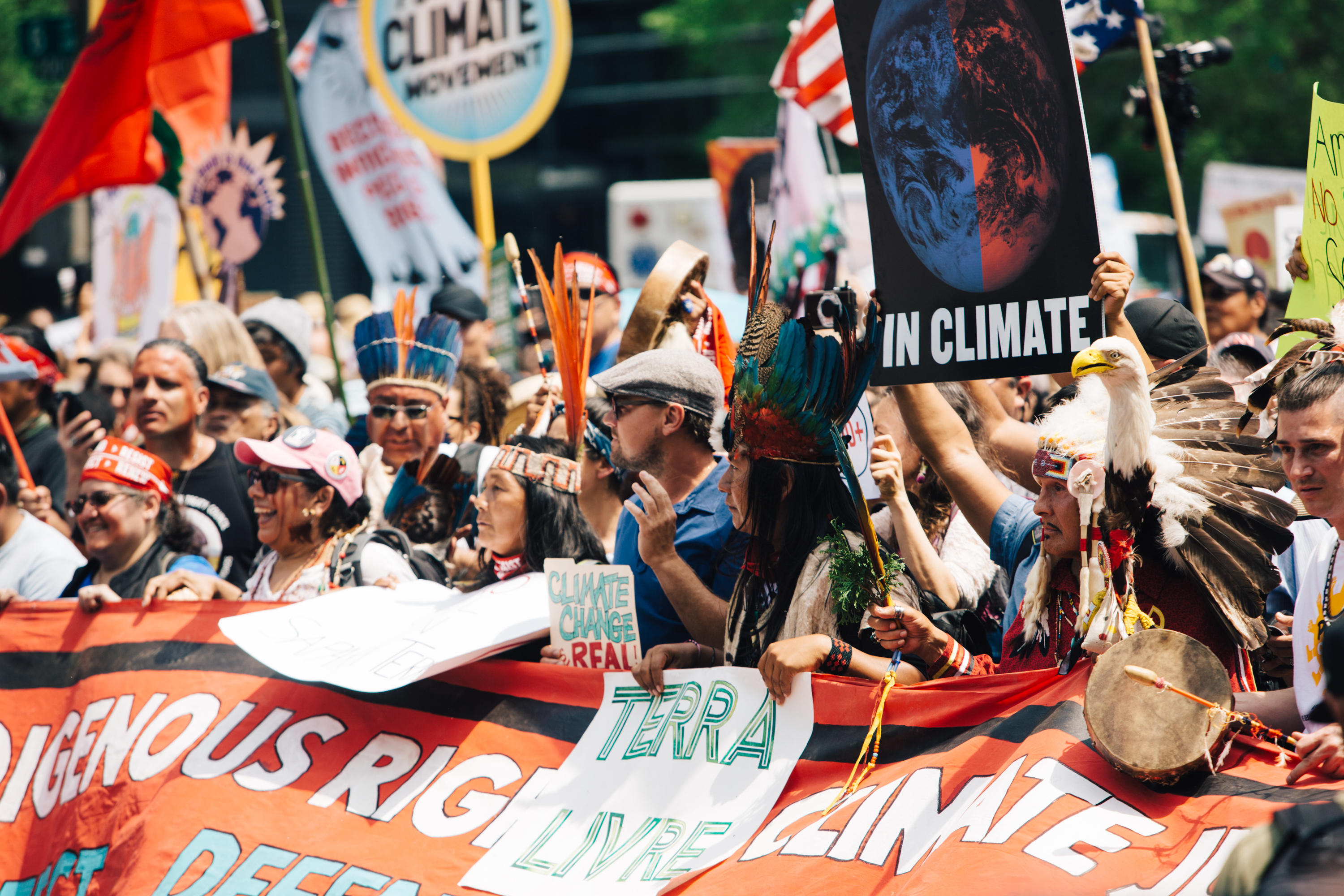
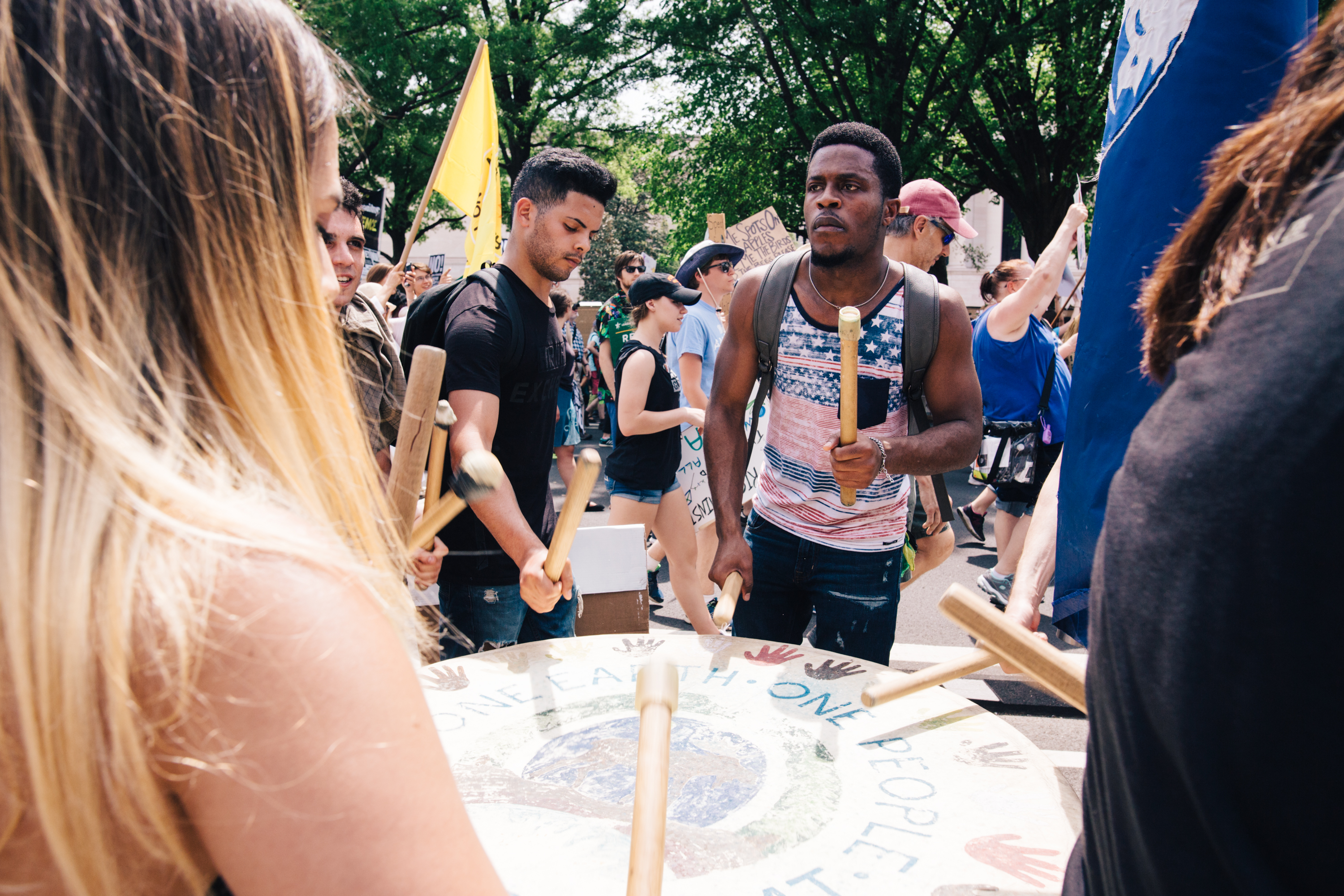
Led by the First Nations who beat their drums to set the pace, we followed dutifully and had the opportunity to talk to fellow marchers about why they were there and what they wanted the current administration to know.
For many millennials like myself, this was their first march. They came to D.C. to show Trump that our generation has power, is ready to fight, and is not complacent on political and human rights issues, like climate, as we are so often portrayed to be.
For older generations, who have marched many times before, many said they were marching because they have seen what an environmental ally in the White House looks like, and they know we have come too far to go back on all the progress we’ve made.
A unifying element among all groups at the march was the belief that that the environmental movement is too large and too important to be stopped by one climate-denying president.
Yazmin Khan, Digital Campaign Manager, LCV:
The day of the Peoples Climate March was a day of record heat. It reached into the low 90s in April, breaking previous records, which was an illustrative backdrop for our march for meaningful action on climate change. I was amazed that, in the midst of this heat, there were hundreds of thousands of people in the streets, all united together for climate, jobs and justice.
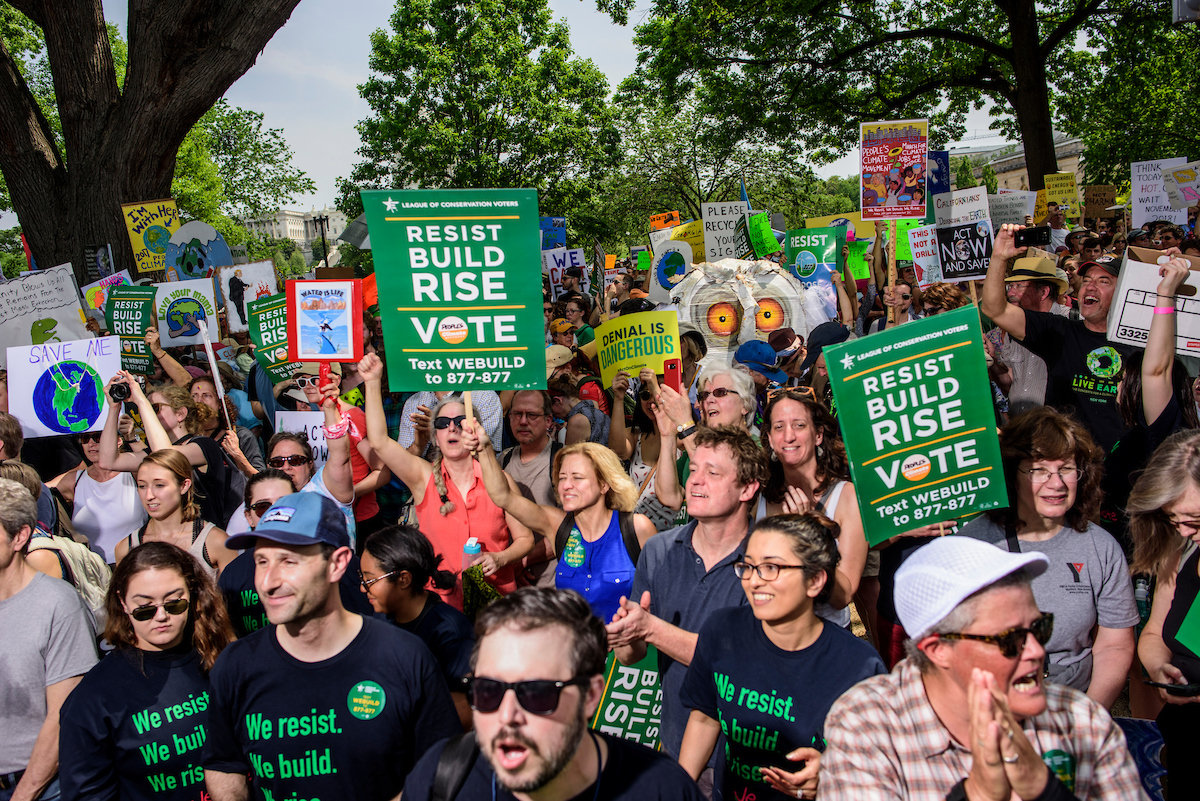
In the Fossil Fuel Resisters contingent, among many other green groups, LCV hosted a Facebook Live, which meant we talked to many folks in the street to hear why they were marching and where they had come from. My most memorable conversations in this contingent were with young people of color. In an environmental movement that has historically lacked racial diversity, it was encouraging to see so many folks of color leading the discussion of climate justice as well as the march itself.
The best part of the day, for me, was the rally, which affirmed that this march centered around people of color. Native American voices led the event, and people from frontline communities all over the country spoke movingly about their experiences with our changing climate, highlighting climate change as a problem that impacts America’s many faces and voices.
People of faith were represented, and as a Muslim American myself, it was affirming to see my faith included. Since Trump’s Inauguration, the uptick in hate crimes against people of color, especially Muslims, has been deeply disturbing. The march and rally served as a beautiful counter to the hateful violence happening around the country, and the hateful words and policies, like the travel ban and the border wall, coming from the White House.
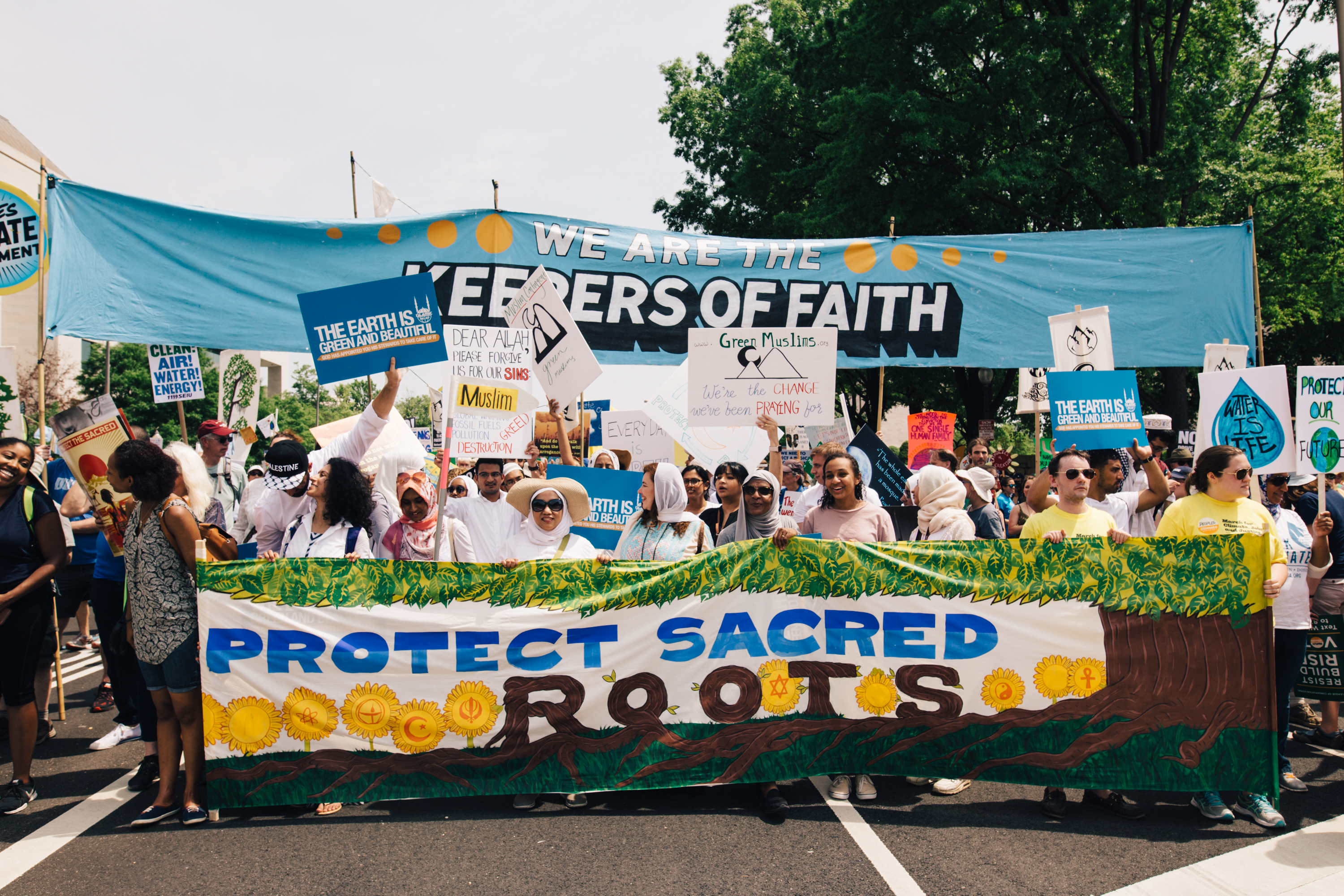
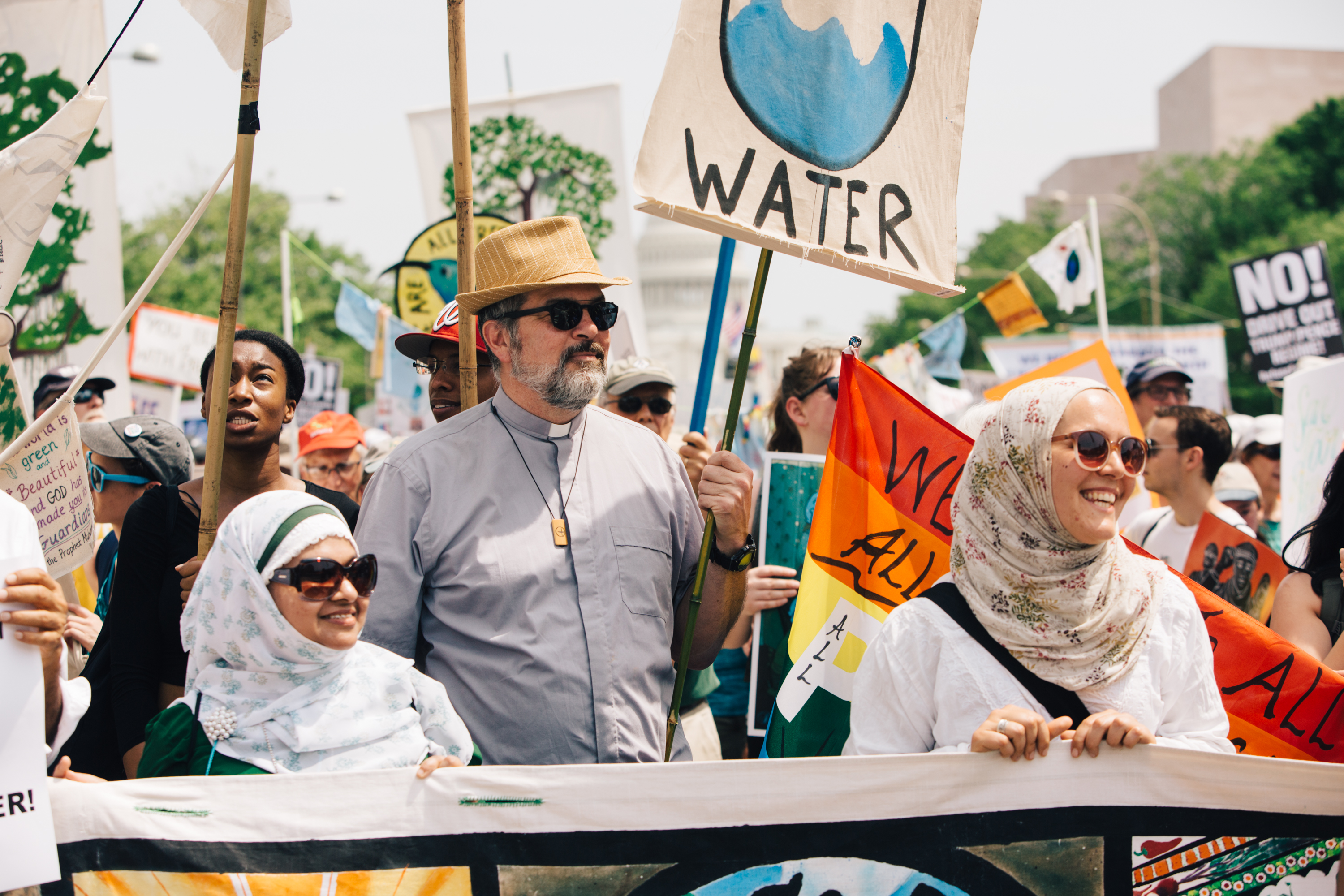
Overall, the march reflected the rich racial and ethnic mix of our nation, with Native American, Native Hawaiian, African American, Latino, South Asian, Afro-Latino, Middle Eastern, and East Asian community members walking side-by-side. Indigenous languages that I’ve never heard before, despite being the original languages spoken in this land, sounded from the rally stage. Stories of the many indigenous people who went to Standing Rock and stood with the Water Protectors abounded—some were inspiring, some—those of the violence experienced—were chilling.
I have never been to a march where I saw the faces and heard the voices of so many members of my national community. Many elders from within the climate justice movement spoke. They recounted decades of fighting Big Oil, of being arrested, of fighting racist, dangerous policies that put their health and land in danger. At a time when the administration supports pipelines and coal, has left the Paris Climate Agreement and regularly tries to ignore us, while the majority of the country wants action on climate change, the memories from the march two months ago serve as a shining inspiration and motivate me when I need the extra boost.
Alfredo Ramirez, Associate Digital Campaigns Manager, Chispa:
April 29th was anything but a normal day. With the sun still rising over Washington, D.C., I woke up earlier than usual to organize my filming equipment, fill my CamelBak with snack bars and water, and set off towards L’Enfant Plaza in the heart of D.C. I was on my way to join the Peoples Climate March, to protest Donald Trump on his 100th day as president of the United States.
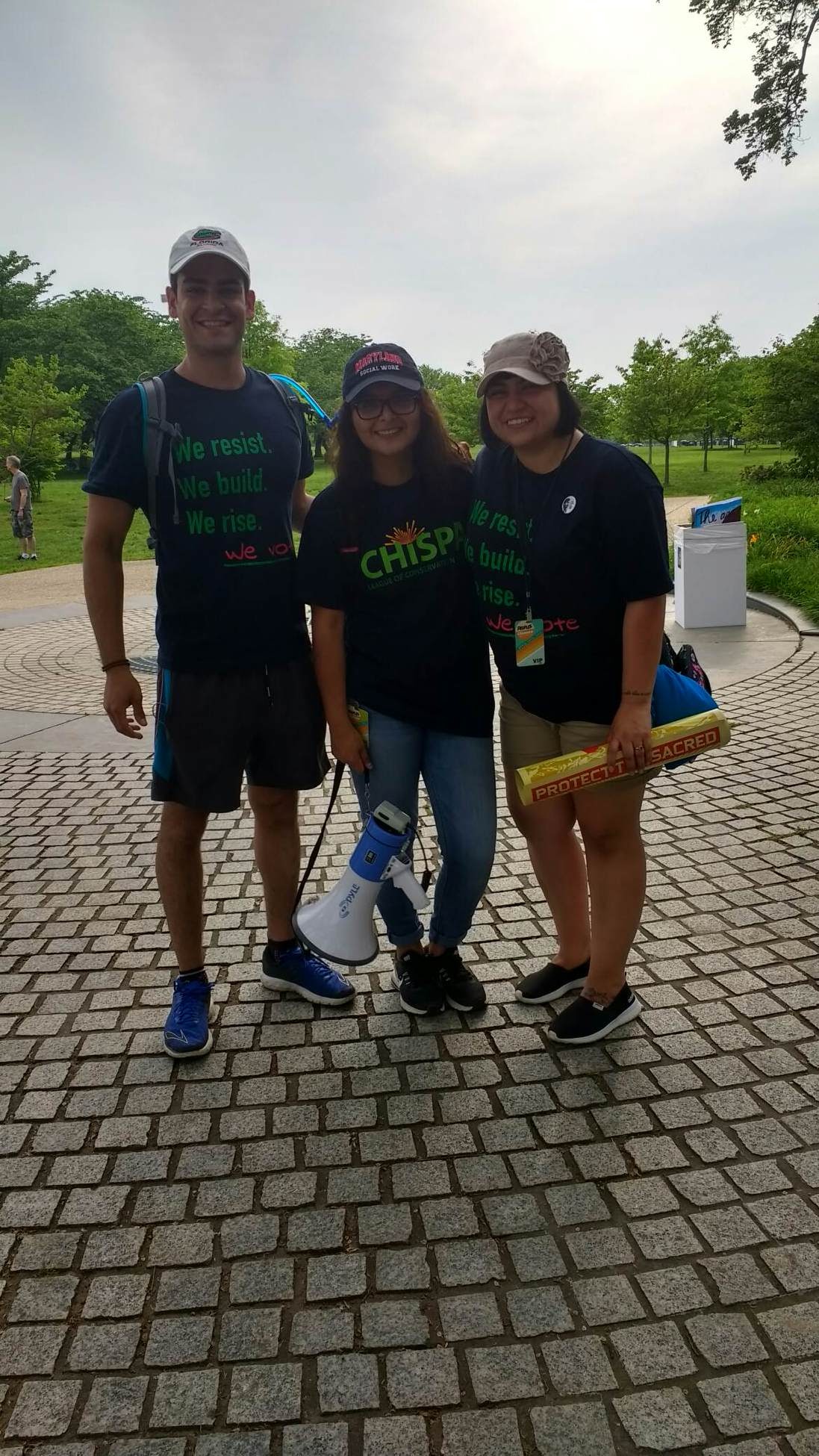
Before I even arrived at the corner of Jefferson Drive and 3rd Street to meet the Fossil Fuel Resistance Bloc and the rest of the LCV team, I underwent a deeply emotional and spiritual experience. Wading through the ocean of activists stationed on Jefferson, I found a diverse mix of individuals, who represented all parts of our country, exhibiting their homemade signs composed of poignant maxims on cut-and-paste printed images. The smell in the air was a special mix of roadside greenery, burning sage, and fresh sweat: the smell of resistance.
I was tasked with filming the march for viewers on social media, inviting them to join the masses through a lens and share in the experience of resisting, no matter how far away they were. This meant walking backwards with the blazing sun hugging my neck, guided by a helpful assistant who pulled on my shirt, making certain I didn’t run over anyone as I captured the march on video. It also meant talking one-on-one with dozens of the marchers alongside me.
It was an unbelievable experience, not to talk, but to have real conversations. I asked people who they were, where they came from, and why they were marching. People like Cory, a Mainer studying environmental policy in Vermont, who ventured all the way to D.C. to help inspire policy change on climate. People like Tyler, an 18 year old from the D.C. area, who told me, “We have to take action into our own hands” when leaders ignore the future of younger generations. And people like Senator Sheldon Whitehouse of Rhode Island, who serves in our nation’s capital as a consistent voice calling for climate action, and who reminded us the oceans are just as important as our lands, and that they should all be protected.
Perhaps one of the most powerful moments was in the beginning. As the crowds were still lining up, I stood a few hundred yards in front of the U.S. Capitol, listening to the banging of the drums led by members of Indigenous tribes. Standing in front of me, between the Capitol and the Washington Monument, was an older immigrant man. He was alone, though encircled by the growing sea of marchers. In his hands, he held a mast which supported the flags of El Salvador, Ecuador, and the United States of America.

It was a coming together moment, in which I saw all the distinct elements of the march—the people, the sounds, the acts of resistance—all come together. Climate change is an issue that affects everyone, no matter the color of your skin, the money you make, or the god to whom you pray.
Here was the solution: a united people joining forces to fight the problem, together.
Darien Davis, Congressional Champions Project Assistant, LCV:
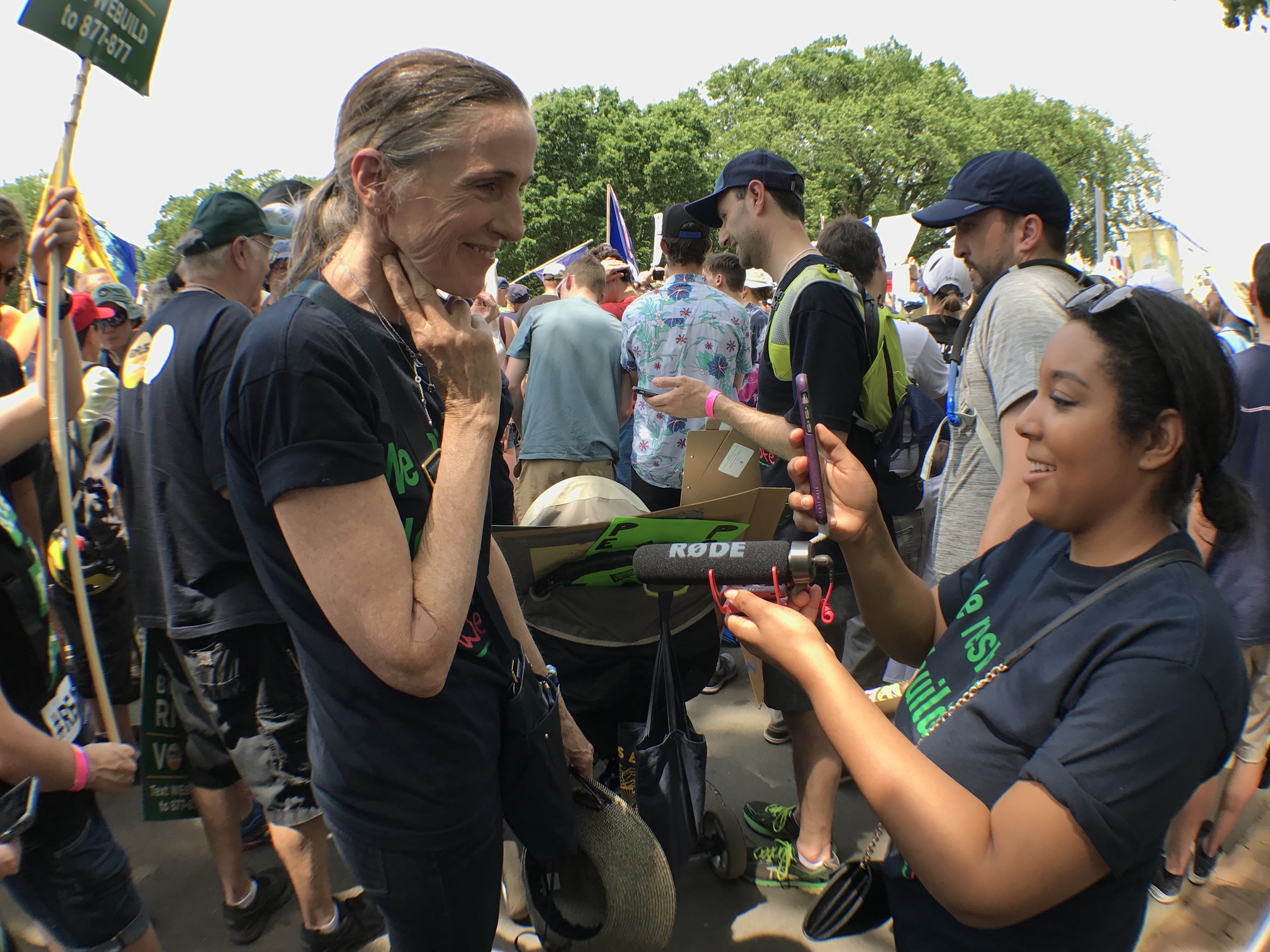
The Peoples Climate March was truly a formative experience. It was fascinating to see individuals from all walks of life and different levels of engagement come together to fight for our planet. I saw students, children, and even members of Congress take to the streets in 100 degree weather to rally for climate action.
While we were marching, Senator Sheldon Whitehouse happened to be marching near us with his staff! Sen. Whitehouse is a tireless champion for climate action, and has given over a hundred “Time To Wake Up” floor speeches on the need to address this global crisis. At the march, Sen. Whitehouse spoke about how we must stand up and fight back against the fossil-fuel industry, an industry that continues to perpetuate a web of denial on the effects of climate change.
I was especially moved by central role that people of color had in planning and executing the march. The march was even organized to ensure that indigenous leaders and communities of color were at the forefront of the resistance, literally leading supporters at the front of the route. It made me feel like finally, people who looked like me and communities who are most devastated by climate change truly had a voice that resonated throughout the environmental community.